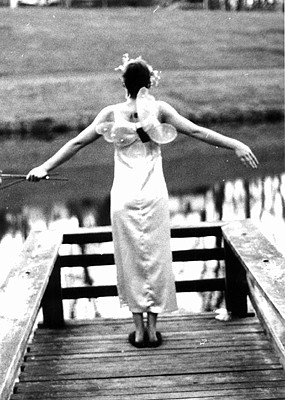All Nonfiction
- Bullying
- Books
- Academic
- Author Interviews
- Celebrity interviews
- College Articles
- College Essays
- Educator of the Year
- Heroes
- Interviews
- Memoir
- Personal Experience
- Sports
- Travel & Culture
All Opinions
- Bullying
- Current Events / Politics
- Discrimination
- Drugs / Alcohol / Smoking
- Entertainment / Celebrities
- Environment
- Love / Relationships
- Movies / Music / TV
- Pop Culture / Trends
- School / College
- Social Issues / Civics
- Spirituality / Religion
- Sports / Hobbies
All Hot Topics
- Bullying
- Community Service
- Environment
- Health
- Letters to the Editor
- Pride & Prejudice
- What Matters
- Back
Summer Guide
- Program Links
- Program Reviews
- Back
College Guide
- College Links
- College Reviews
- College Essays
- College Articles
- Back
Sadako and the Thousand Paper Cranes
August 6, 1945, 8:15 A.M – every watch in Hiroshima came to a stop. On my birthday, August 6th, approximately 70,000 people were killed by the nuclear bombing. Sadako Sasaki, two years old when the bombing occurred, was a healthy and joyful child. She was looking forward to the amazing life she had ahead of her. Little did she know a deadly predator was creeping up behind her, waiting to strike.
Athletic and kind, Sadako Sasaki was well known in her community. Not only was she the fastest runner in her school but was also the girl who was known to bring a smile to anyone’s face. One day in her twelfth year, ten years after the bombing, Sadako was passing her second lap in a race, when a dizzy feeling washed through her. When she woke up the aroma of anti-bacterial soap flooded through her nose. She knew where she was - the hospital. She focused on the muffled sounds coming from the other room. Suddenly she heard a panicked gasp, one of her mother’s, which was followed by a question. “My daughter has leukemia?”
Thinking of all the setbacks of the disease, Sadako could almost feel her perky, lively soul slipping away from her. Chizuko, her best friend, would often visit her and remind her about the myth of the thousand paper cranes. If one folds a thousand paper cranes they can have one wish to improve anything in their life. Eager to get well, Sadako took on the challenge. Masahiro, her big brother, promised to hang every crane she made on the ceiling of her hospital room. Sadako grew weaker with every day and every crane she made.
One week, Sadako’s nurse offered to take her in a wheelchair to the porch to get some sun. On the porch was a nine-year old boy named Kenji who was also a leukemia patient. The color had drained from his face and it was almost as if he were a ghost. Instantly, Sadako and Kenji became best friends and met every week on the porch. One day, Kenji didn’t show up, instead his nurse came to tell Sadako he had passed away in the morning.
Sadako’s parents would come to her room daily, and her mother would often cry, knowing her daughter’s time was running out. She tried to comfort her but Sadako’s mouth was locked and she couldn’t find the key. The sickness prevented Sadako from moving properly or speaking but she could hear and see. Tearing her eyes away from her mother, Sadako looked up at the six hundred forty four cranes she had made. She closed her eyes to take a nap. This nap was different though, because she never woke up.
Innocent, poor Sadako couldn’t have done anything to prevent her sickness. Did Sadako have any say while others were engaging in war? No, because she was only two years old. Did Sadako deserve these months of pain and agony? No. So the next time we consider war, we need to think of all the innocent people who will suffer. Whether we belong to different cultures, races, religions or territories we are all one big family. And families never hurt each other.

Similar Articles
JOIN THE DISCUSSION
This article has 0 comments.
